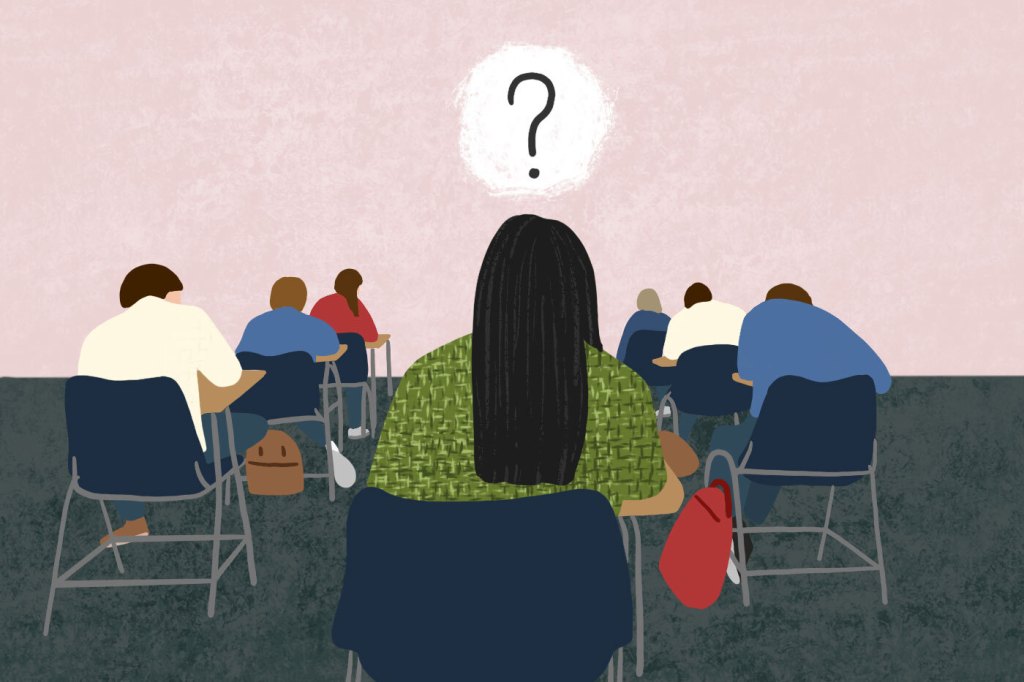English learners in public school classrooms are often left behind. What can help them catch up?

Unequal education for English learners—a rapidly growing population of immigrants often underserved and lacking advocates—is emerging as a key social justice issue in schools across the country, says Chieh Li, associate professor of school psychology at Northeastern.
English learners, who now make up one out of every 10 students, are the fastest-growing group in public school classrooms, Li says. But they often are left behind as many grapple with linguistic, cultural and economic hurdles that can derail their education and life-long potential, she says.
“These students are taking exams and judged by teachers who aren’t aware or trained about the need for linguistic sensitivity. They need to make sure the student understands the exam questions and can respond in their second language,” says Li, who argues the sink-or-swim style English language immersion isn’t effective.

Chieh Li, associate professor of school psychology in the Bouvé College of Health Sciences at Northeastern. Li wants to help English learners thrive in the classroom. Photo by Ruby Wallau/Northeastern University
English learners take high-stakes standardized tests before they’ve got a firm understanding of the colloquial phrases, cultural norms and different accents in the area, says Louis J. Kruger, a retired school psychology professor at Northeastern who worked with Li on a recently-published article about the issue.
“These tests can change the entire trajectory of a kid’s life, and often not for the better,” says Kruger, who co-authored ‘Advancing social justice for English learners: Implications for school psychology training,’ with Li and Noora Abdulkerim, a graduate student at Northeastern.
Yimi Alvarez, for example, moved to Massachusetts from the Dominican Republic when he was 11 years old. He learned as much English as he could while going through the public school system in Salem, but he failed the Massachusetts Comprehensive Assessment System test partially because he had trouble understanding the questions, he says.
“It really got me sad because my mother tried hard to raise me and I feel like I disappointed her. I even hid the grades from her,” says Alvarez, who added that additional help with comprehension would have made all the difference.
“I’m living testimony to how difficult it can be,” he says.
Failing the MCAS, which is required to get a high school diploma, meant a number of opportunities slipped away.
“I couldn’t apply for financial aid without a diploma. I was thinking about joining the military, but I couldn’t join the military because I didn’t have a diploma,” Alvarez says. “It felt like without a diploma you aren’t anyone.”
Li’s article, which was published in April in School Psychology Training and Pedagogy, points out that instructors often can’t tell the English learners are struggling because the students are able to interact and communicate in English.
“Educators and psychologists don’t have the training to understand the needs and nuances that English learners experience,” says Li.
Li said she was lucky to have a supportive professor who helped her when she came to Massachusetts from China 35 years ago to complete her doctorate. She’s heard from many English learners who tried to adapt to the language as fast as they could, but missed a lot of information as the teacher whizzed through classes believing everyone understood.
English learners can often speak fluently after three to five years, but it takes eight years until they’re proficient in academic English, Li says. Teachers and counselors can better help English learners by understanding what it’s like to learn in a non-native language. They should also be trained to intervene and provide bilingual structure for struggling English learners.
“The process of responding to native speakers in terms of speed and expression takes time,” she says.
Standardized testing for English learners is inequitable, says Camille M. Garcia, a Language Acquisition Team Facilitator and ESL teacher working for Boston Public Schools. “Newcomers and emerging bilinguals with little to no foundation in English are being pulled away from necessary learning to prepare for and take mandatory state tests that are not linguistically or culturally appropriate,” she says, adding, “Oftentimes, tests are measuring test-taking abilities (integrating trickery and strategy that serves to confuse rather than provide access) as opposed to evaluating students’ educational knowledge, experience, and/or abilities.”
The statistics highlight the need for additional structure and aid for English learners, says Kruger. They have the lowest four-year high school completion rate of any subgroup, according to the National Center for Education Statistics. Only 18 percent of English learners go on to a four-year college, as opposed to 43 percent of non-English learners.
Many English language learners are also people of color and come from low-income homes, adding to the unjust disparity in education, says Kruger.
“These kids might be immigrants or kids of immigrants, and they’re less familiar with the system. They’re less likely to stand up for themselves and voice their opinions about what their needs are and how the current practices don’t meet their needs,” said Kruger. “They’re a group that’s been left behind.”
For media inquiries, please contact media@northeastern.edu.





